My view of XR in 2024: Into the multiverse of possibilities

I'm looking forward to new AR and VR solutions in 2024 that solve lingering problems and expand the reach of XR to a broader audience.
Each new year brings advancements in technology, and there's a multiverse of possibilities for XR in 2024. Perhaps we'll finally dismiss the myth that VR is dead, and AR is perpetually ten years away.
Apple Vision Pro is coming soon
Apple is finally entering the VR category with its Vision Pro headset, which could launch as early as February 2024. The Mac and iPhone manufacturer prefers to call its headset a spatial computer, setting expectations that the Vision Pro will be more like an iPad or a MacBook than a Meta Quest Pro or Varjo Aero.
At $3,500, the Vision Pro is a luxury headset should be able to replace a high-performance laptop capable of gaming, casual computing, and serious work, but it seems unlikely that it will become a device you can use all day. The problem isn't the display quality or speed, which are impressive according to early hands-on reports, but rather the comfort.
The Apple Vision Pro VR/AR headset is controlled with eye and hand tracking as well as voice. | Image: Apple
Apple constructed the Vision Pro of aluminum and glass, with an inward and outward display and a body packed full of cameras and sensors. Given the size and weight, it might be difficult to get through a full workday with such a hefty headset pressing into your face.
Apple will advance the concept of spatial computing and validate mixed reality and virtual reality as a worthy technology to consider for everyday use. That's an important step for an industry that's mostly driven by gaming. However, a wearable laptop replacement must be lightweight and comfortable enough for several hours of use every day. The Vision Pro might fall short in this regard.
My vision of XR in the future
My long-term, futuristic vision for XR is a wearable that's completely unnoticeable until I access it. With a thought, this ideal device would augment my senses and expand my capabilities, replacing phone, smartwatch, tablet, TV, computer, and the myriad accessories and cables that are currently necessary.
I should be able to seamlessly switch between an unobstructed view of my surroundings, to a heads-up display, and full VR immersion. This future technology will provide gaming and entertainment, but also aid my everyday life with news, weather, and directions, as well as help me complete my work, no matter where I am.
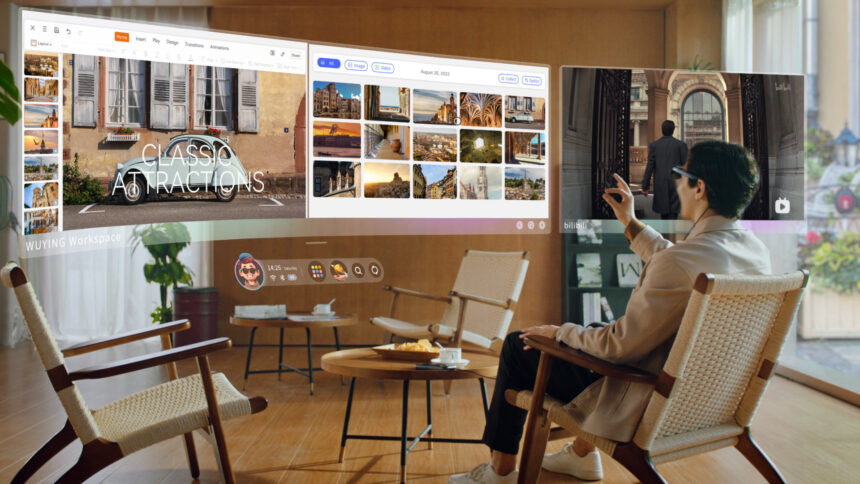
Rokid's simulation of how its AR Station works. | Image: Rokid
It will take decades of technological advancement or a revolutionary new approach for that dream to become reality. In the meantime, the industry is moving in the right direction as AR and VR devices improve without adding weight, bringing faster chips, better displays, and more convincing mixed reality experiences over time.
Progress has been slow, but that's changing as technology reaches a critical threshold where tiny low-power components have enough bandwidth and performance to create compelling, lightweight devices.
What's coming in 2024
The Vision Pro is important for Apple's long-term plans and the growth of the industry, regardless of whether it succeeds or fails financially in 2024. It's a milestone for Apple and an opportunity to shape expectations.
For most people, the much more affordable Quest 3 will have a greater impact on their lives. For gaming, there's little reason to look any further than this potent standalone VR headset. Combining the Quest 3 with a high-performance PC or laptop will provide an experience that's similar, but not quite equivalent, to Apple's Vision Pro.
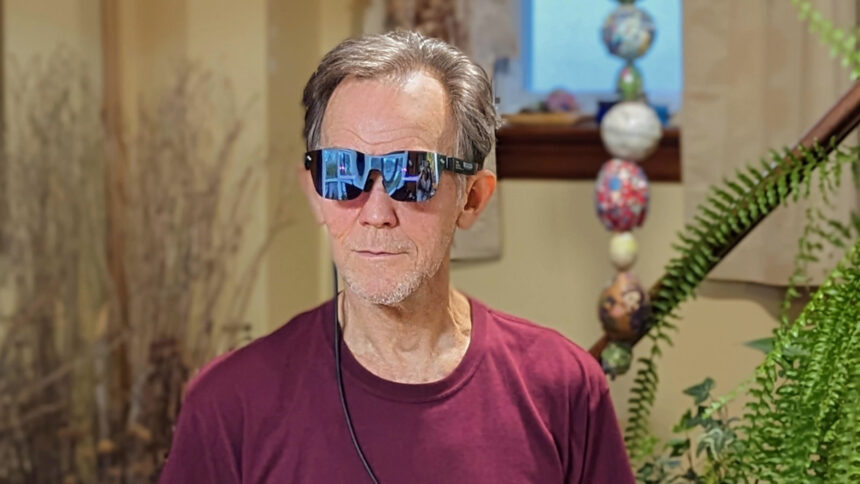
Alan wears RayNeo Air 2 smart glasses while connected to a Samsung phone. | Image: Mixed
I want more than that. The current generation of smart glasses are lightweight and comfortable enough for a couple hours of use, providing multiple large displays for my computer or phone, but the technology used darkens the view of my surroundings and limits the graphics field of view.
2024 could bring lightweight AR glasses and VR headsets that offer spatial computing solutions that are more acceptable, and possibly even compelling enough to replace your laptop. You might expect Microsoft or Google to step forward, but both companies seem hesitant about how to proceed.
The future of Microsoft's HoloLens is uncertain, and Windows Mixed Reality support will end in 2026. The Enterprise Edition of Google Glass is no longer available, and software development stopped in September. Its AR glasses project, teased at the end of Google IO 2022, has reportedly ceased as well.
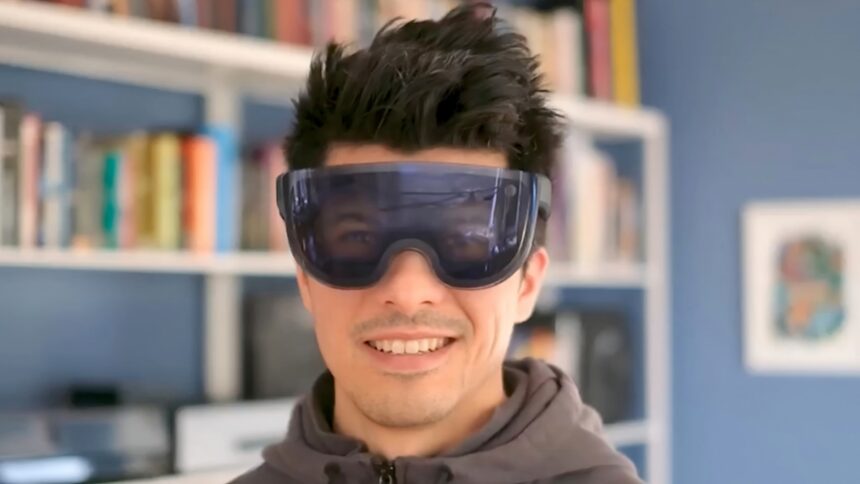
Man with futuristic VR headset that uses reverse passthrough to show the user's eyes. | Image: Meta
VR headsets keep getting better and, in some cases, smaller. There's a possibility of another VR headset or a pair of smart glasses from Meta, but rumors are sparse at the moment. Apple and Meta added performance and mixed reality, but didn't innovate in size or comfort. That leaves an opening for other manufacturers to fill the gap.
Samsung announced a partnership with Google and Qualcomm to create an XR headset and rumors suggest it could arrive in 2024, but we have no solid details about this device.
The Immersed Visor stands out as a 2024 VR headset that looks like sports glasses and will reportedly weigh about as much as a phone. As a popular virtual desktop app developer, Immersed placed long-term comfort, display quality, and user interface at the top of the list when designing this wearable. In many ways, it sounds like an alternative to the Apple Vision Pro, with 4K displays, eye-tracking, and a focus on spatial computing.
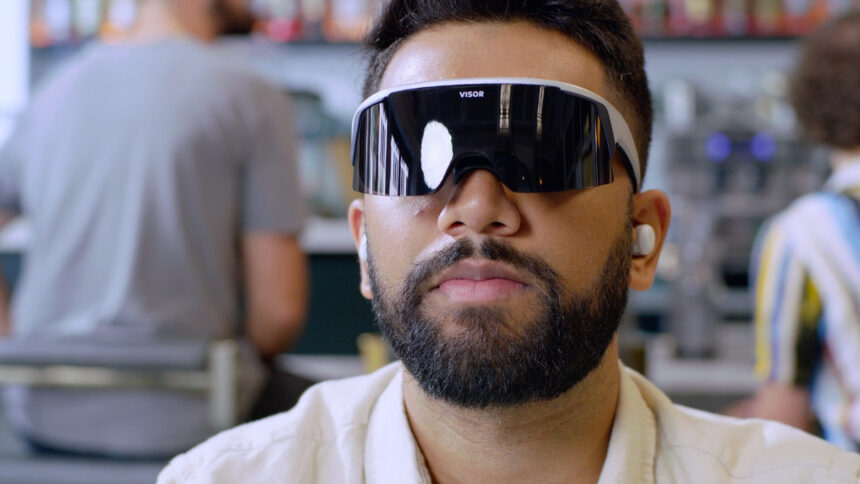
A person wears the Immersed Visor while out of the office. | Image: Immersed
Shiftall launched its MeganeX PC VR headset in Japan but hasn't shared any timeline for expansion. This is another minimalist headset that's light enough to use earpieces instead of a head strap. However, the delayed release could hamper its ability to compete with more advanced solutions coming in 2024.
Meanwhile, Xreal, RayNeo, Rokid, and other smart glasses manufacturers like Nimo Planet are adding low-power processors, XR apps, more sensors, and improved displays. These devices might not fully replace your phone or laptop, but you can expect to see smart glasses that are much more powerful, and more expensive, in 2024. Greater spatial awareness will bring some AR capabilities to these next-gen smart glasses to justify the cost.
What I wish for XR in 2024
If I had my way, XR would move in a slightly different direction in 2024. I wish Apple had scaled back its plans for the Vision Pro and led with a lightweight headset that contained head and hand-tracking sensors, a 2.5K-per-eye display, and high-quality passthrough. Processing could be offloaded to an iPhone using ultra-wideband technology for fast wireless communication.
An iPhone can already manage impressive AR effects. HoloKit, a supercharged and updated headset similar to Google Cardboard, lets you use your iPhone Pro as a display with great passthrough clarity, high-resolution graphics, and spatial awareness via LiDAR.
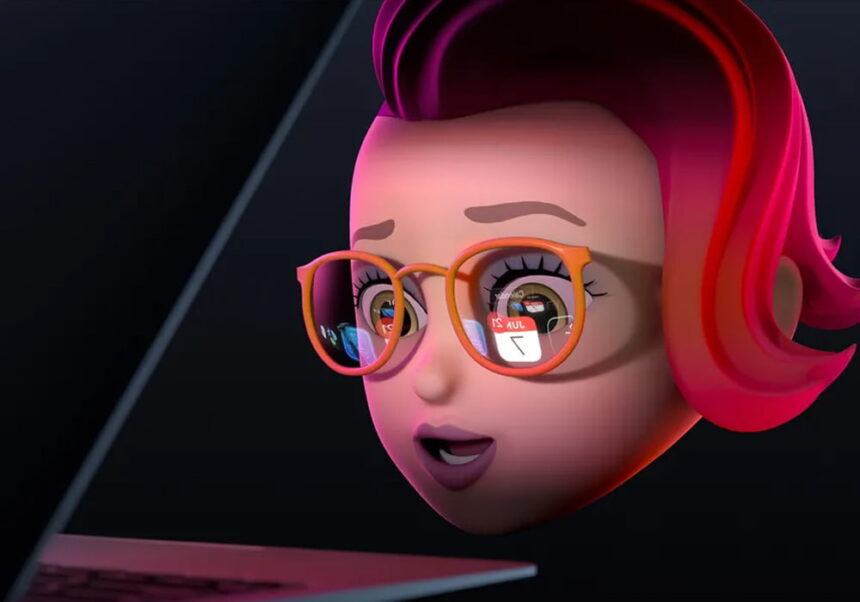
An Apple Memoji wears glasses with a laptop screen reflected in the lens. | Image: Apple
Samsung is also in a great position to make a phone-powered XR headset, extending Dex to become a 3D desktop. Qualcomm's Snapdragon XR2 Gen 2 is quite powerful, the Snapdragon XR2+ Gen 2 takes that much further with 4K resolution, and the AR2 Gen 1 is specifically designed to share the processing load with a phone. However, rumors suggest Samsung is focusing on a Vision Pro competitor.
A pair of AR glasses with waveguide displays can be thin and light with greater power efficiency. Combine that with the photo, video, and AI capabilities of Ray-Ban Meta Smart Glasses to make a potent hardware solution ready for the future.
There's no doubt there are complications and product timelines that make low-cost, lightweight AR glasses more difficult than I can imagine. However, the usefulness of AR glasses that can serve as a heads-up display for notifications, news, weather, and directions, replace my TV and monitor, connect to a PC, and act as a laptop if I pair Bluetooth accessories, would make such a device an instant hit.
That's what I want in 2024, but I'll be happy with an improved XR headset that can handle spatial computing.
Note: Links to online stores in articles can be so-called affiliate links. If you buy through this link, MIXED receives a commission from the provider. For you the price does not change.